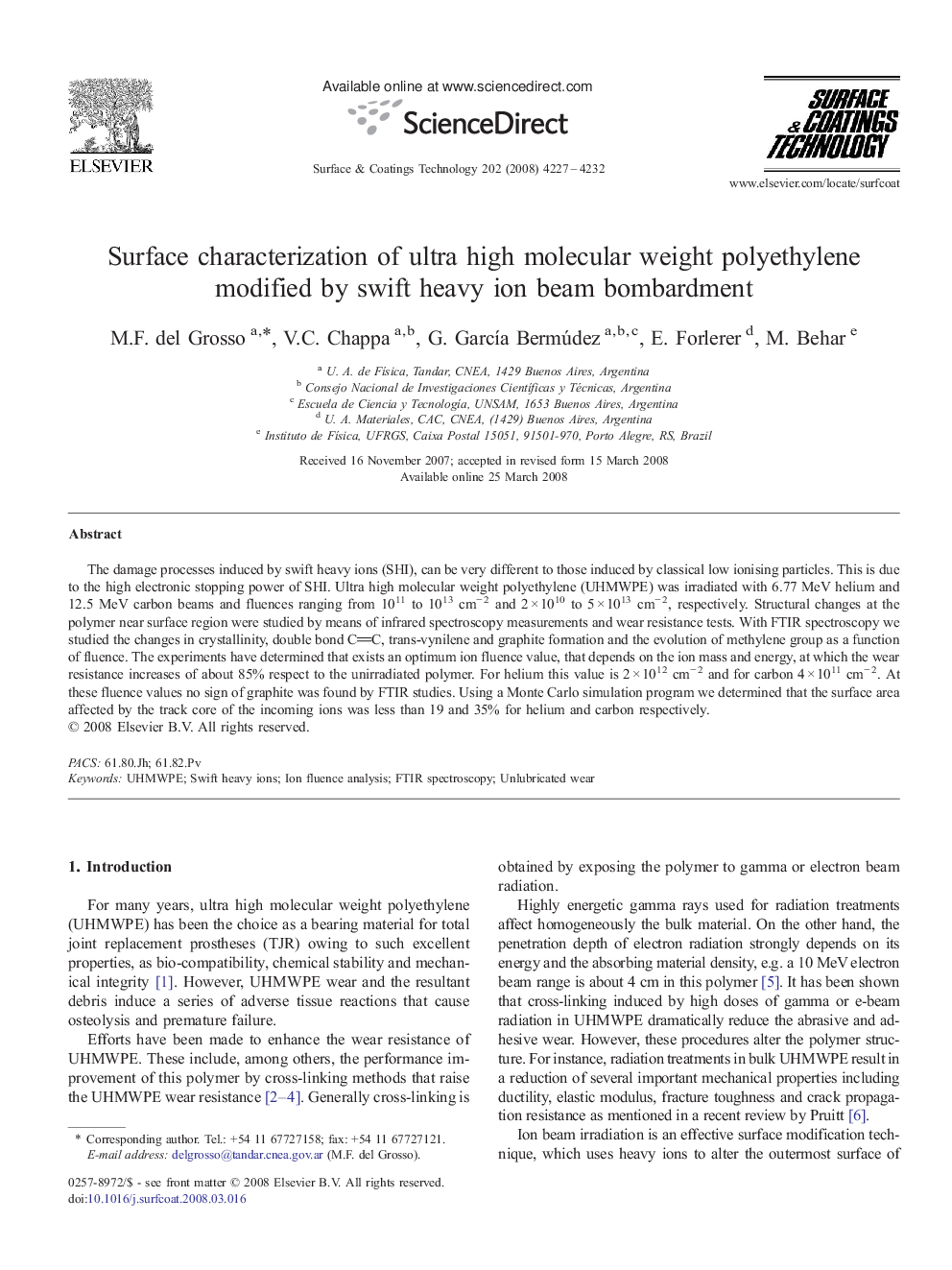| Article ID | Journal | Published Year | Pages | File Type |
|---|---|---|---|---|
| 1661236 | Surface and Coatings Technology | 2008 | 6 Pages |
The damage processes induced by swift heavy ions (SHI), can be very different to those induced by classical low ionising particles. This is due to the high electronic stopping power of SHI. Ultra high molecular weight polyethylene (UHMWPE) was irradiated with 6.77 MeV helium and 12.5 MeV carbon beams and fluences ranging from 1011 to 1013 cm− 2 and 2 × 1010 to 5 × 1013 cm− 2, respectively. Structural changes at the polymer near surface region were studied by means of infrared spectroscopy measurements and wear resistance tests. With FTIR spectroscopy we studied the changes in crystallinity, double bond CC, trans-vynilene and graphite formation and the evolution of methylene group as a function of fluence. The experiments have determined that exists an optimum ion fluence value, that depends on the ion mass and energy, at which the wear resistance increases of about 85% respect to the unirradiated polymer. For helium this value is 2 × 1012 cm− 2 and for carbon 4 × 1011 cm− 2. At these fluence values no sign of graphite was found by FTIR studies. Using a Monte Carlo simulation program we determined that the surface area affected by the track core of the incoming ions was less than 19 and 35% for helium and carbon respectively.
